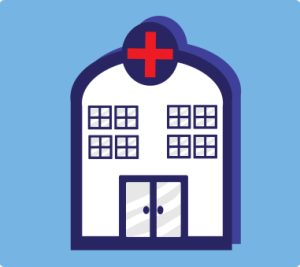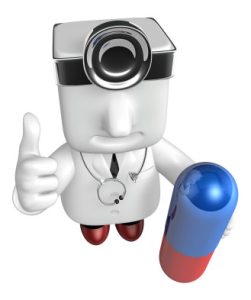Case management is an integral component of health care delivery, serving as a bridge between patients’ needs and the complex array of health services. It ensures that individualized care is provided through assessment, planning, coordination, advocacy, and evaluation. Case managers are essential in facilitating effective care, optimizing patient outcomes, and enhancing the efficiency of health care services. This article explores the multifaceted role of case management in health care delivery and organization, the skills required by case managers, and the challenges and future directions of this field.
Please also review AIHCP’s Case Management Program and see if it matches your academic and professional goals

Key Takeaways
- Case management tailors health services to individual needs, emphasizing personalized care and continuity of support.
- Effective case managers require clinical judgment, critical thinking, and comprehensive knowledge of health care systems and community resources.
- Challenges in case management include the need for experienced professionals and the variability in health care outcomes, underscoring the importance of patient involvement.
- Strategic implementation of case management can improve patient safety, reduce health care costs, and integrate clinical and managerial skills for better care delivery.
- The evolution of case management continues to shape health care delivery, with ongoing efforts to enhance its impact through interprofessional collaboration and evidence-based practices.
The Role of Case Management in Health Care Delivery
Assessment and Personalized Care Planning
The initial step in case management involves a comprehensive assessment to determine the appropriate level of care, intensity of service, length of stay, and place of service. This process is critical in developing a personalized care plan with specific objectives, goals, and interventions tailored to meet the individual’s needs.
The care plan is a dynamic document that addresses both medical and nonmedical services, ensuring care continuity across various settings and integrating the consumer’s voice in its design.
Effective case management hinges on the ability to anticipate and avoid potential problems through proactive planning. This includes identifying crucial resources and tools for health education, motivational interviewing, and therapeutic planning. The assessment also encompasses evaluations of social support systems, which play a vital role in the patient’s overall well-being and recovery.
Coordination of Health Services
Effective care coordination is a cornerstone of a well-functioning healthcare system. It ensures that patient care is organized across various sectors, including specialty care, hospitals, home healthcare, and community services. The Patient Protection and Affordable Care Act has emphasized the importance of care coordination to improve quality and control costs, transforming the healthcare delivery system.
Care coordination occurs in various settings and is integral to models such as the Patient-Centered Medical Home (PCMH), where it is a required element. In the PCMH model, the goal is to organize care across all elements of the healthcare system. Enhanced care coordination has the potential to significantly reduce healthcare costs, with studies suggesting reductions of up to 35%.
The distinction between care management and care coordination is subtle yet significant. While often used interchangeably, each plays a unique role in the patient’s healthcare journey.
Advocacy and Resource Allocation
Case managers play a pivotal role in navigating resource allocation challenges in healthcare. They ensure that the resources, which encompass funding for healthcare organizations, reimbursement models, and budgeting processes, are managed effectively to support patient care. Proper financial management is essential for the sustainability of health services and the optimization of patient outcomes.
Effective advocacy and resource allocation require a comprehensive understanding of the healthcare system’s complexities. Case managers must be adept at evaluating contracts and negotiating with facilities and vendors to secure the best possible care for their clients at the most reasonable cost. They apply evidence-based guidelines to inform their decisions and make use of community resources and care alternatives to enhance clinical outcomes.
The strategic allocation of resources and the ability to advocate for patients’ needs are critical in developing a plan of care that addresses both the immediate and long-term health goals of individuals.
By implementing and coordinating interventions that lead to the accomplishment of established goals, case managers contribute significantly to more general quality-improvement initiatives. Their role is not only to oversee the efficient use of resources but also to ensure that care delivery is patient-centered and aligned with the best practices in the field.
Post-Discharge Follow-Up and Continuity of Care
Ensuring continuity of care post-discharge is a critical component of effective case management. The association between continuity of care and attendance at follow-up appointments is pivotal to maintaining patient safety and optimizing recovery. Care transitions demand meticulous coordination among healthcare providers, including the reconciliation of discharge medications with previous regimens to mitigate adverse drug events.
Community physicians play a significant role in post-discharge care, often coordinating with various healthcare agencies. The Centers for Medicare & Medicaid Services have introduced policies to compensate physicians for this coordination in the 30 days following a hospital stay, emphasizing the importance of reducing readmissions.
Effective post-discharge care involves several key steps: Scheduling and completing follow-up visits with primary care physicians or specialists. Empowering patients and caregivers to actively participate in post-discharge care. Educating patients and caregivers about potential red flags indicating worsening conditions and appropriate responses.
In-home health consultations, often led by advanced practice nurses, complement office-based care coordination. These programs, rooted in health promotion and empowerment, have shown effectiveness in reducing adverse outcomes and hospitalizations.
Critical Skills for Effective Case Managers

Clinical Judgment and Independent Analysis
Effective case management hinges on the case manager’s ability to exercise clinical judgment and conduct independent analysis. This involves a nuanced understanding of medical policies, clinical guidelines, and the unique circumstances of each patient. Case managers must integrate their clinical expertise with critical-thinking skills to navigate complex health scenarios, ensuring that care coordination is both patient-centered and aligned with best practices.
In the context of case management, the application of clinical judgment is multifaceted. It encompasses the assessment of a patient’s health status, the analysis of treatment plans, and the evaluation of resource utilization. Independent analysis is crucial when determining the appropriateness of care, especially in situations that require deviation from standard protocols to meet individual patient needs.
- Acquires and analyzes clinical records and guidelines
- Assesses health status and resource utilization
- Coordinates services to promote positive health outcomes
Case managers are tasked with the responsibility of making informed decisions that directly impact patient care. Their independent analysis is supported by clinical guidelines designed to enhance, not supplant, their professional judgment.
Critical Thinking and Problem Solving
In the realm of health care, case managers are often confronted with complex scenarios that demand effective decision-making processes. They must navigate through intricate patient needs, health care policies, and resource limitations to devise solutions that are both practical and beneficial for patient care.
- Evaluate the situation and identify barriers to care
- Generate potential solutions and weigh their feasibility
- Implement the most viable solution and monitor its effectiveness
- Adjust the plan as necessary based on patient feedback and outcomes
Effective case management hinges on the ability to critically analyze situations and adapt plans to meet the evolving needs of patients.
The ability to test and evaluate new ideas is crucial for continuous improvement in patient care. Case managers must work collaboratively with care teams, employing critical pathways and multidisciplinary action plans to ensure that all aspects of patient care are addressed. This collaborative approach not only enhances the quality of care but also fosters a culture of innovation within the health care team.
Knowledge of Departmental Procedures and Guidelines
Effective case management hinges on a comprehensive understanding of departmental procedures and guidelines. Case managers must be adept at applying, interpreting, and communicating the myriad policies, clinical guidelines, and regulatory standards that govern their practice. This knowledge ensures that patient care is not only consistent with legal and ethical standards but also aligned with the strategic goals of the healthcare organization.
Case managers are responsible for maintaining the confidentiality of all patient health information (PHI), in compliance with state and federal law, as well as organizational policy. This is a critical aspect of their role, as it protects patient privacy and upholds the integrity of the healthcare system.
In addition to safeguarding PHI, case managers must also be vigilant in identifying and reporting suspected fraud and abuse, as per company policy. This responsibility underscores the importance of their position in maintaining the trustworthiness and efficiency of healthcare delivery.
The ability to effectively research and analyze complex issues is essential for case managers. It enables them to assess a member’s health status, resource utilization, and treatment options with a high degree of professional judgment and critical-thinking skills.
Furthermore, case managers are often tasked with preparing reports and materials for committee presentations, which requires a thorough grasp of data collection and analysis. Their recommendations can influence the oversight and management of patient care, making their insights invaluable to the continuous improvement of case management programs.
Understanding Community Resources and Standards of Care
Effective case management hinges on the case manager’s ability to navigate and utilize community resources while adhering to established standards of care. Case managers act as advocates and liaisons, ensuring that members receive coordinated services that are both appropriate and efficient. They are tasked with identifying individuals who may benefit from case management and proactively engaging with at-risk members.
- Screens members for potential case management services.
- Integrates complex services by coordinating with providers, members, and health networks.
Comprehensive needs assessments and periodic home visits are integral to the care-coordination process, which is tailored to the individual’s circumstances and health status.
Case managers require a detailed understanding of departmental procedures, clinical guidelines, and the contractual landscape to effectively serve high-risk or high-cost groups. Their role is critical in managing the range of medical and long-term care services, ensuring that care is not only accessible but also meets the quality standards expected within the community.
Challenges and Critiques of Case Management in Healthcare

Need for Experienced and Skilled Case Managers
The efficacy of case management hinges on the expertise and capabilities of the case managers themselves. Experienced and skilled case managers are indispensable for ensuring that health care delivery is both effective and patient-centered. They are tasked with a complex array of responsibilities, from conducting comprehensive case assessments to coordinating care and advocating for patients.
Case managers must possess a deep understanding of clinical guidelines, departmental procedures, and community resources. Their role often requires them to engage in critical-thinking and independent analysis, especially when dealing with high-risk or high-cost groups.
The role of case managers extends beyond individual patient interaction to encompass a broader impact on health care systems. Their contributions are vital in tailoring services to individual needs, ensuring quality outcomes, and facilitating proactive care.
The table below outlines the typical requirements and responsibilities for case managers, reflecting the multifaceted nature of their role:
| Requirement | Description |
|---|---|
| Education/Experience | Nursing program graduate, MSW, or Ph.D.; Bachelor’s degree preferred. |
| Clinical Experience | Minimum of three years required. |
| Case Management Experience | One to three years required, health plan experience preferred. |
| Responsibilities | Assessment, coordination, planning, monitoring, and evaluation across multiple environments. |
Variability in Health Care Utilization Outcomes
The effectiveness of case management in health care is often measured by its impact on health care utilization outcomes. However, there is a notable variability in these outcomes, which can be attributed to several factors. These include differences in patient characteristics, the presence or absence of standardized care pathways, and the level of patient involvement and collaboration among care teams.
- Patient characteristics: Age, ethnicity, and underlying health conditions.
- Standardized care pathways: Protocols for consistent care delivery.
- Patient involvement: Engagement in care decisions.
- Collaborative care teams: Multidisciplinary approach to patient care.
The goal of reducing variability is to ensure that all patients receive high-quality, consistent care regardless of their individual circumstances or the care setting.
Critiques of case management often highlight the resistance from some healthcare providers to adopt standardized care pathways, which are essential to reduce variability. Moreover, the success of case management is contingent upon the active involvement of patients and the effectiveness of collaborative practice teams. Without these elements, the potential benefits of case management, such as reduced hospital readmissions and emergency department visits, may not be fully realized.
The Necessity for Patient Involvement and Collaborative Teams
The integration of patient involvement within healthcare delivery is a cornerstone for achieving optimal outcomes. Patients who are actively engaged in their care tend to experience better health results and report higher satisfaction levels. This engagement is facilitated by case managers who serve as advocates, ensuring that patients have the necessary support, resources, and information to make informed decisions about their care.
Collaborative teams form the backbone of effective case management. These teams often consist of primary care physicians, specialists, nurses, and mental health professionals who work together through digital platforms to provide coordinated care. The synergy of these interdisciplinary teams is crucial for the seamless delivery of healthcare services, as it promotes comprehensive communication and information sharing among providers.
The emphasis on collaborative and integrated care models reflects the evolving nature of healthcare, where the focus is shifting towards patient-centered approaches that prioritize continuous engagement and education.
To further illustrate the importance of collaboration, consider the following benefits:
- Enhanced communication and decision-making processes
- Improved patient satisfaction and HCAHPS scores
- Streamlined workflows leading to more efficient care coordination
- Reduction in healthcare costs through shared resources and expertise
- Increased capacity for proactive and preventive care strategies
Evaluating the Effectiveness of Case Management Practices
The effectiveness of case management in healthcare is a subject of ongoing scrutiny. Critics have raised concerns about the standardization of practices and their potential impact on patient outcomes. To address these concerns, a systematic approach to evaluating case management is essential. This involves assessing various components such as care plan revisions, service delivery, and psychosocial interventions.
Evaluating the effectiveness of case management practices requires a multifaceted approach:
- Revising care plans when goals are met or new needs are identified.
- Performing evaluations in multiple environments, including health care management and community support.
- Closing cases in accordance with established guidelines and in a timely manner.
The approach emphasizes the importance of personalized care and the necessity for patient involvement and collaborative practice teams.
Furthermore, the evaluation process must consider the role of case managers in coordinating resources and advocating for clients. It is also critical to examine the impact of case management on health care utilization outcomes, such as reduced hospital readmissions and emergency department visits. However, mixed results in studies indicate the need for further research to establish clear metrics for success.
Optimizing Patient Care through Case Management

Improving Patient Outcomes and Safety
The primary objective of case management in health care is to enhance patient outcomes and ensure safety. By streamlining patient flow and optimizing operational efficiency, case management programs contribute significantly to these goals. A well-structured case management system not only boosts patient outcomes but also increases revenues by improving the efficiency of staff and reducing waste due to process failures.
Implementing quality improvement programs requires careful consideration. Prioritizing areas for improvement such as safety, effectiveness, access, and patient-centeredness is essential. These areas are critical for meeting the high standards of accountability in health care delivery.
It is also crucial to examine patient populations and facility operations to identify barriers to care and management issues. Addressing these can lead to better care coordination, reduced patient wait times, and ultimately, improved health outcomes. Ensuring communication and care are optimized is a vital aspect of healthcare quality improvement, which benchmarks performance against national standards and focuses on patient-centered, evidence-based care.
Reducing Health Care Costs and Risks
In the realm of health care delivery, case management plays a pivotal role in reducing health care costs and mitigating risks associated with patient care. By implementing strategic care coordination, case managers can significantly diminish the frequency of hospital readmissions and the use of nonessential resources. This not only streamlines the patient’s journey through the health care system but also ensures that the care provided is both cost-effective and of high quality.
Effective case management leads to improved patient outcomes and staff efficiency, while simultaneously reducing waste from process failures. These benefits are crucial in a landscape where health care providers are increasingly evaluated based on patient outcomes rather than the volume of procedures performed.
For high-risk populations, in particular, care coordination has shown to be instrumental. It addresses the complex health issues that often lead to costly treatments and repeated hospitalizations. The table below summarizes the impact of case management on health care costs and risks:
| Impact Area | Description |
|---|---|
| Hospital Readmissions | Reduced through targeted interventions |
| Resource Utilization | Minimized nonessential use |
| Patient Outcomes | Improved through personalized care plans |
| Staff Efficiency | Enhanced by streamlining processes |
By focusing on these areas, case management contributes to the overall effectiveness and efficiency of the health care system, which is particularly important given the challenges of resource constraints and the aging population.
Integrating Clinical, Managerial, and Financial Skills
The integration of clinical, managerial, and financial skills is pivotal for the effective delivery of health care services. Case managers must navigate the complexities of patient care while ensuring that services are cost-effective and resources are utilized efficiently. This multifaceted approach requires a balance between patient-centered clinical decisions and the strategic management of health care operations.
Effective case management hinges on the ability to merge these diverse skill sets. For instance, clinical workflows must be aligned with financial planning to maintain the sustainability of health care services. Similarly, critical response systems and support services need to be managed in a way that maximizes patient safety and minimizes risks. The table below illustrates some of the key areas where clinical, managerial, and financial skills intersect:
| Clinical Aspect | Managerial Focus | Financial Consideration |
|---|---|---|
| Patient Safety | Quality Assurance | Cost Reduction |
| Clinical Workflows | Resource Coordination | Budget Management |
| Critical Response | Emergency Preparedness | Risk Mitigation |
The synergy of clinical expertise, managerial acumen, and financial stewardship is essential to advance the quality of care and optimize patient outcomes. It is this triad that enables case managers to execute their roles effectively, adapting to the ever-evolving landscape of health care delivery.
As health care continues to evolve, the demand for case managers who possess a comprehensive understanding of these areas becomes increasingly important. They must be adept at leading teams, analyzing information, and implementing strategies that address both the immediate and long-term needs of patients.
Enhancing Integrated Care for Frequent Users
Integrated care for frequent users of healthcare services is pivotal in ensuring that patients receive comprehensive, coordinated, and continuous care. Collaborative care models are increasingly incorporating remote care into their systems, allowing for seamless interaction among primary care physicians, specialists, nurses, and mental health professionals. This holistic approach promotes better communication and information sharing, which is essential for frequent users who often have complex health needs.
The integration of health information technology, such as the development of the Home Continuation Care Dashboard, has shown promise in improving care delivery, particularly in the home care setting. This technology aids in the management of patient information and supports the coordination of care among different providers.
Guided Care is an example of a model that combines home care with office-based care, offering a solution for older adults with chronic conditions. Nurses in this program work closely with physicians and other healthcare providers to deliver patient-centered and cost-effective care. The table below outlines the key components of the Guided Care model:
| Component | Description |
|---|---|
| Nurse Partnership | Nurses partner with primary care physicians to manage and coordinate care. |
| Patient-Centered | Care plans are tailored to the individual needs of patients. |
| Cost-Effectiveness | The model aims to reduce hospitalizations and improve efficiency. |
The strategic implementation of such models is essential to enhance the impact of integrated care for frequent users, ensuring that they receive the most effective and efficient care possible.
Strategic Implementation of Case Management

Tailoring Services to Individual Needs
In the realm of healthcare, case management is pivotal for ensuring that services are tailored to the unique needs of each patient. This personalized approach is not only a cornerstone of quality care but also a means to enhance patient outcomes. By focusing on individual needs, case managers can devise care plans that are both effective and efficient, leading to better health results and patient satisfaction.
Effective case management requires a comprehensive understanding of a patient’s health status, preferences, and social circumstances. This understanding allows for the creation of a care plan that addresses the specific conditions and challenges faced by the patient. For instance, tailored case management approaches for complex and high-need patient cases can significantly shorten hospital stays and improve care coordination.
The success of case management in healthcare hinges on its ability to adapt services to the individual needs of patients, ensuring that each receives the most appropriate and high-quality care.
To achieve this, case managers must work closely with patients, healthcare providers, and other stakeholders to ensure that all aspects of care are considered and integrated into the patient’s treatment plan. This collaborative effort is essential for the seamless delivery of services and for fostering an environment where patients are empowered to take an active role in their healthcare.
Ensuring Quality and Efficient Service Organization
In the realm of health care, ensuring quality and efficient service organization is pivotal to enhancing patient outcomes and operational efficiency. A robust management system for quality improvement initiatives is essential, as it supports the adherence to healthcare standards and fosters better patient care. Effective tracking of HEDIS measures is one such initiative that hospitals can leverage to monitor and report on healthcare effectiveness, access, and patient-centeredness.
When considering the implementation of a quality improvement program, it is crucial to identify and prioritize potential areas for improvement. These areas typically encompass safety, effectiveness, access, and patient-centeredness. It is also important to align quality improvement (QI) priorities with the organization’s vision and strategic plan, ensuring that each initiative contributes to the overarching goals of the institution.
Many programs are organization-wide, ongoing, and long-term, aiming to continually increase levels of performance. This approach to quality improvement is not just about meeting benchmarks but about embedding a culture of excellence within the healthcare organization.
Finally, determining how to test and evaluate new ideas is a critical step in the QI process. This involves setting targets, implementing changes, and measuring outcomes to ensure that the initiatives undertaken are the right ones for the organization and that they are moving it towards its strategic vision.
Involving Professional Institutions and Informal Caregivers
The integration of professional institutions and informal caregivers is crucial for a holistic approach to case management. Professional institutions provide structured support through clinical expertise, standardized procedures, and access to resources. Informal caregivers, often family members or friends, play a complementary role by offering day-to-day assistance and emotional support to patients.
Incorporating informal caregivers into the care plan acknowledges their invaluable contribution and addresses their needs, which often remain unmet. It is essential to equip them with the necessary tools and knowledge to effectively support the patient, while also ensuring their own well-being is not neglected.
The synergy between professional care providers and informal caregivers can significantly enhance the quality of patient care, fostering a supportive environment that promotes better health outcomes.
To facilitate this collaboration, clear communication channels must be established, and responsibilities should be defined. Training programs and support groups can empower informal caregivers, enabling them to provide care confidently and competently.
Ongoing Efforts to Enhance Impact in Service Sectors
In the realm of case management, ongoing efforts to enhance the impact in service sectors are pivotal for the continuous improvement of health outcomes and institutional effectiveness. Strategic initiatives are crucial in driving these enhancements, focusing on operational efficiency, quality improvement, and patient safety.
Efforts to optimize service delivery are often characterized by their organization-wide scope and long-term orientation. These initiatives may include:
- Project management to plan and execute strategic goals.
- Data visualization for informed decision-making.
- Coordination of programs to improve cyclical activities such as patient care.
The coordination of construction programs for uninhabitable houses involves aspects like arrangement, synchronization, and common goals, highlighting the importance of effective collaboration and goal alignment in social rehabilitation initiatives.
Furthermore, the involvement of professional institutions and informal caregivers is essential in ensuring transparency and efficient service organization. This collaborative approach is integral to the evolution of case management strategies, aiming to empower individuals and promote inclusivity through tailored services.
The Evolution of Case Management in Social Service Delivery
Historical Perspectives and Developments
The evolution of case management in health care has been shaped by various historical milestones. Case management emerged as a distinct profession in the early 20th century, primarily in response to the complex needs of patients with chronic illnesses and the growing recognition of the importance of coordinated care.
- The early 1900s saw the introduction of social work case management, focusing on individualized care and advocacy.
- By the mid-century, the role expanded within health care settings, emphasizing the need for interdisciplinary collaboration.
- The late 20th century witnessed the formalization of case management with the establishment of professional organizations and certification processes.
The shift towards patient-centered care and the integration of services across the health and social sectors has been a defining characteristic of case management’s history. This approach has consistently aimed to improve patient outcomes by addressing not only medical but also psychosocial needs.
As case management continues to evolve, it remains a critical component of effective health care delivery, adapting to changes in policy, technology, and patient demographics.
Current Trends in Case Management
The landscape of case management is continually evolving to meet the dynamic needs of healthcare delivery. Case management is a balancing act that requires aligning patient needs with healthcare offerings, navigating through bureaucracies, and ensuring the patient’s best interests are at the forefront. This complex role is becoming increasingly vital as healthcare systems seek to improve efficiency and patient outcomes.
Recent trends in case management emphasize the importance of personalized care, with case managers assessing needs, planning interventions, and coordinating services to tailor care to individual patients. The approach not only focuses on immediate healthcare needs but also on long-term wellness and prevention strategies.
The success of case management hinges on the collaborative efforts of multidisciplinary teams, which include healthcare professionals, social workers, and informal caregivers. These teams work together to create critical pathways and action plans that ensure comprehensive and continuous care.
The necessity for experienced and well-trained case managers is more pronounced than ever. Their expertise in navigating the complexities of healthcare systems and their ability to advocate for patients are crucial for optimizing case management programs and achieving proactive care.
Future Directions and Potential Innovations
The landscape of case management is continually evolving, with technological advancements and changing healthcare dynamics driving innovation. As we look to the future, several key areas emerge as potential hotbeds for innovation in case management.
- Advanced Monitoring Technologies: The integration of wearable devices and remote monitoring tools is expected to enhance patient engagement and enable real-time health data analysis.
- Telemedicine Integration: Seamless incorporation of telemedicine into case management practices promises to improve access to care and coordination.
- Evidence-Based Standards: The development of evidence-based standards for case management will likely guide practice improvements and policy-making.
- Reimbursement Models: New reimbursement models that recognize the value of case management services are anticipated to emerge, supporting the sustainability of these practices.
The future of case management is poised to be shaped by the convergence of technology, policy, and patient-centered care, leading to more accessible, efficient, and integrated healthcare solutions.
Interprofessional Collaboration in Case Management
Roles and Functions of Case Managers
Case managers are integral to the health care delivery system, providing a bridge between patients, health care providers, and the broader health care infrastructure. Their primary responsibilities include assessing patient needs, planning and coordinating care, and advocating for the patient to ensure optimal health outcomes. Case managers ensure that care is personalized, continuous, and cost-effective, addressing the unique circumstances of each patient.
- Assessment: Identifying patient needs, preferences, and goals.
- Planning: Developing a comprehensive care plan in collaboration with the patient and health care team.
- Coordination: Aligning resources and services to implement the care plan effectively.
- Advocacy: Representing the patient’s interests and ensuring their voice is heard in the decision-making process.
- Evaluation: Monitoring progress and outcomes to adjust the care plan as needed.
- Follow-Up: Ensuring continuity of care post-discharge and during transitions between care settings.
The role of case managers extends beyond the clinical aspects of care. They are also responsible for navigating complex health care systems, facilitating communication among various stakeholders, and optimizing the use of health care resources to improve patient outcomes.
Collaborative Practice Teams and Multidisciplinary Action Plans
The integration of collaborative practice teams and multidisciplinary action plans is pivotal in the orchestration of comprehensive patient care. These teams are composed of diverse healthcare professionals who bring a wealth of knowledge and expertise to the table, ensuring that all aspects of a patient’s health are addressed.
The synergy of interdisciplinary care teams is not just beneficial but necessary in the complex landscape of modern healthcare. It balances clinical, logistical, financial, and regulatory demands, paving the way for enhanced patient outcomes.
In the realm of geriatric care, the complexities are magnified, necessitating a robust interdisciplinary approach. Practice facilitators play a key role in this environment, assisting with quality improvement activities and capacity building for evidence-based practices.
Remote care models are evolving to become more integrated within these collaborative frameworks. Interdisciplinary teams, including primary care physicians, specialists, nurses, and mental health professionals, are expected to work in unison through digital platforms, promoting a holistic and coordinated approach to patient care.
Critical Pathways for Patient-Centered Care
Critical pathways for patient-centered care are designed to ensure that individuals and families are at the center of care planning and delivery. These pathways facilitate the integration of medical and nonmedical services and support seamless transitions from acute to long-term care settings.
To achieve this, several components must be in place:
- Strong clinical and organizational support for coordinating care
- Appropriate payment incentives for care coordination
- Systems that include the consumer voice in care design
The role of a case management coordinator is pivotal in ensuring comprehensive and seamless care throughout the healthcare journey.
Moreover, the Four Pillars identified by Eric Coleman, MD, MPH, emphasize patient safety during care transitions, which are integral to effective care coordination. These pillars serve as a foundation for practice teams, critical pathways, and multidisciplinary action plans. The effectiveness of these strategies relies heavily on the skills and training of case managers, underscoring the need for ongoing assessment and refinement of case management approaches.
Measuring the Impact of Case Management on Health Care Delivery
Metrics for Assessing Service Delivery and Patient Care
In the realm of health care delivery, the selection of appropriate metrics is crucial for evaluating service quality and patient care. Metrics serve as tangible indicators of performance, guiding improvements and accountability in health care systems. To effectively measure service delivery, health care providers may focus on key performance indicators (KPIs) such as safety, effectiveness, access, and patient-centeredness.
Metrics not only reflect the current state of health care delivery but also inform strategic decisions for future improvements.
For instance, examining patient populations and facility operations can reveal barriers to care, such as long patient wait times, or highlight chronic conditions that require targeted interventions. Additionally, financial metrics, including costs associated with treatments and claims, are essential for identifying areas where efficiency can be enhanced, thereby reducing unnecessary expenditures.
The impact of these metrics is profound, with government and insurance reimbursements increasingly based on health outcomes rather than the volume of procedures. This shift underscores the importance of tracking the right KPIs to ensure organizational performance aligns with the highest standards of care. Hospitals that effectively track performance on agreed-upon quality measures report benefits such as improved care processes, better care outcomes, and fewer hospitalizations.
Case Studies and Evidence-Based Outcomes
The evaluation of case management practices through case studies and evidence-based outcomes is crucial for understanding their impact on health care delivery. Case studies provide real-world insights into the effectiveness of case management interventions, revealing both successes and areas for improvement. Evidence-based outcomes, on the other hand, offer quantitative measures of case management’s influence on patient care and resource utilization.
A synthesis of case studies and systematic reviews has highlighted the variability in health care utilization outcomes. For instance, some studies report reduced hospital readmissions and emergency department visits, while others call for further evaluation due to mixed results. This underscores the importance of context and individual patient factors in determining the success of case management.
The necessity for patient involvement and the role of collaborative practice teams are recurrent themes in the literature, emphasizing the need for skilled case managers to navigate these complexities.
To illustrate the diverse impacts of case management, consider the following table summarizing key findings from various studies:
| Study | Outcome | Impact on Health Care |
|---|---|---|
| AHRQ Impact Case Studies | Improved quality and safety | Positive |
| Systematic Review of Reviews | Reduced readmissions | Mixed |
| Clinical Psychology Practices | Effective service delivery | Positive |
These findings suggest that ongoing assessment and refinement of case management strategies are essential for ensuring effectiveness and enhancing patient experiences.
The Role of Research in Advancing Case Management
Research plays a pivotal role in the continuous improvement of case management practices. Through systematic investigation, it identifies areas requiring enhancement and validates the efficacy of case management interventions. Studies have shown mixed results regarding the impact of case management on health care utilization, indicating the need for ongoing research to optimize methodologies and outcomes.
Effective case management is dependent on a multitude of factors, including patient involvement, collaborative practice teams, and the expertise of case managers. Research contributes to the development of best practices by evaluating these components and their interplay. For instance, the necessity for experienced case managers is a recurrent theme in literature, underscoring the importance of professional development in this field.
The synthesis of research findings facilitates the evolution of case management, ensuring that it remains responsive to the dynamic needs of health care delivery.
To illustrate the influence of research on case management, consider the following table which summarizes key areas of focus:
| Research Focus | Description |
|---|---|
| Patient Involvement | Examining the role of patient engagement in the success of case management. |
| Collaborative Teams | Assessing the effectiveness of multidisciplinary teams in care coordination. |
| Case Manager Expertise | Investigating the impact of case manager training and experience on patient outcomes. |
Ethical Considerations in Case Management

Patient Autonomy and Informed Consent
Informed consent is a cornerstone of patient autonomy, ensuring that individuals are fully aware of the potential risks and benefits of medical procedures before agreeing to them. Surgical consent can help patients safeguard themselves from unwelcome procedures, maintain their autonomy, and uphold their moral and legal rights. It is essential for healthcare providers to facilitate a clear understanding of medical interventions, fostering an environment where patients feel comfortable to make informed decisions.
- Medication self-management is a critical aspect of informed consent, where patients and their families are educated and involved in the medication management process.
- Patient engagement and education are increasingly prioritized, with the development of interactive platforms and personalized health portals that support informed decision-making.
- Ensuring follow-up care and patient awareness of ‘red flags’ are integral to maintaining autonomy post-treatment, as they empower patients to actively participate in their ongoing health management.
The principle of informed consent is not only a legal obligation but also an ethical imperative that respects the patient’s right to self-determination and personal health governance.
Confidentiality and Privacy in Case Management
In the realm of health care, the sanctity of patient information is paramount. Case managers are entrusted with the safeguarding of Protected Health Information (PHI), which encompasses any data that can be used to identify an individual and their health history. This responsibility is not only ethical but also legal, with stringent state and federal laws in place to ensure the confidentiality of “individually identifiable health information”.
Data security and privacy measures are critical components of case management. As the health care industry increasingly adopts remote care models, the emphasis on robust encryption, secure communication channels, and adherence to healthcare data protection regulations intensifies.
The table below outlines key privacy measures that case managers must adhere to in order to maintain the integrity of medical records and personal information:
| Privacy Measure | Description |
|---|---|
| Encryption | Protects data during electronic transmission |
| Access Controls | Limits information access to authorized personnel |
| Audit Trails | Tracks access and changes to health records |
| Data Minimization | Collects only necessary information |
These measures are not exhaustive but represent a foundation for maintaining the privacy and confidentiality that is critical to the trust between patients and health care providers.
Addressing Health Disparities and Social Determinants of Health
Case management plays a pivotal role in addressing health disparities and the social determinants of health. Effective interventions must consider factors such as social determinants, spatial demarcations, and life-course perspectives. The interaction between these interventions and their contexts is critical for determining their effectiveness.
To ensure equitable health outcomes, case managers must be adept at identifying and addressing the unique needs of diverse populations. This includes understanding and mitigating the impact of racial and ethnic differences in healthcare access, such as the disparities in telemedicine use.
- Alzheimer’s Disease and Related Dementias
- Mental Wellbeing and Substance Abuse Prevention
- Chronic Diseases and Conditions
- Transmissible and Emerging Diseases
- Injury, Safety and Violence
- Maternal and Child Health
- Social and Economic Conditions Impacting Health
Evaluating the viability of interventions in real-life contexts and understanding the mechanisms that produce effects are essential components in addressing the complexity of population health.
Case managers must also be familiar with the broader health landscape, including health care economics, quality, reform, and workforce issues. They should be knowledgeable about health policy and systems science to effectively advocate for patients and navigate the complexities of healthcare delivery.
Educational and Training Requirements for Case Managers
Core Competencies and Skill Development
The development of core competencies in case management is pivotal to ensuring that case managers are equipped with the necessary skills to evaluate care options and create effective treatment plans. These competencies encompass a broad range of skills, from clinical expertise to interpersonal communication.
- Clinical knowledge and expertise
- Effective communication and interpersonal skills
- Ethical decision-making and adherence to professional standards
- Ability to navigate and coordinate complex healthcare systems
The integration of these competencies is critical for case managers to adapt to the dynamic nature of healthcare delivery and to meet the diverse needs of patients.
Continual skill development is essential for case managers to stay abreast of the latest healthcare trends and practices. This not only involves formal education but also on-the-job learning and professional development opportunities. Employers often seek case managers who demonstrate a commitment to lifelong learning and the ability to apply their knowledge in practical settings.

AIHCP and the American Academy of Case Management also offers a certification in Healthcare Case Management for qualified professionals.
Certification and Continuing Education
The pursuit of certification and the commitment to continuing education are pivotal for case managers aiming to maintain proficiency and stay abreast of evolving industry standards. Certification serves as a formal recognition of specialized knowledge, skills, and experience in case management and is often a requirement for employment in various health care settings.
Continuing education, on the other hand, is essential for case managers to keep up with the latest developments in health care policies, technologies, and best practices. It ensures that professionals are equipped to provide the highest quality of care to their patients. Many certifying bodies mandate a certain number of continuing education units (CEUs) for recertification, which underscores the importance of lifelong learning in this field.
The dynamic nature of health care necessitates a commitment to ongoing professional development to deliver patient-centered care effectively.
Below is a list of common certifications for case managers:
- Certified Case Manager (CCM)
- Accredited Case Manager (ACM)
- Certified Professional in Healthcare Management (CPHM)
- Board Certified Case Manager (BCCM)
- Certified Disability Management Specialist (CDMS)
Interdisciplinary Education Models
Interdisciplinary education models in case management emphasize the importance of collaborative learning environments where professionals from various healthcare disciplines engage in shared training experiences. These models aim to mirror the collaborative nature of clinical practice, ensuring that case managers are well-equipped to work within interdisciplinary care teams. Such teams are crucial for the development of comprehensive care plans that address the multifaceted needs of patients.
The integration of interdisciplinary education into case management training programs is supported by evidence suggesting that teamwork is essential for effective healthcare delivery. For instance, research shows that interdisciplinary care plans are beneficial not only for each patient, but also for healthcare team members included in planning care. This approach fosters a deeper understanding of each discipline’s role and enhances communication skills, which are vital for coordinating patient care.
In the context of geriatric care, the complexities of managing clinical, logistical, financial, and regulatory variables necessitate the involvement of an interdisciplinary care team (IDT). Training in interdisciplinary models prepares case managers to navigate these complexities and contribute meaningfully to patient-centered care strategies.
As healthcare continues to evolve, the role of digital platforms in facilitating remote and integrated care models becomes increasingly significant. Case managers trained in interdisciplinary models are better positioned to leverage these technologies, ensuring seamless collaboration among primary care physicians, specialists, nurses, and mental health professionals.
Conclusion

In conclusion, case management emerges as a vital component in the orchestration of health care delivery and organization, addressing the complexities of individual patient needs through a multifaceted approach. It necessitates the integration of clinical expertise, critical thinking, and a deep understanding of community resources and standards of care. Despite the challenges and critiques, the evidence underscores the potential of case management to reduce healthcare utilization, enhance patient safety, and curtail costs. The success of case management is contingent upon the collaborative efforts of interdisciplinary teams, the involvement of patients, and the continuous evolution of strategies to meet the dynamic demands of healthcare services. As such, the field must persist in refining its practices and outcomes through rigorous evaluation and adaptation to ensure the provision of high-quality, personalized care.
To excel as a Case Manager, it’s essential to meet the educational and training requirements that set the foundation for effective practice. The American Academy of Case Management (AACM) offers a comprehensive program leading to Case Management Certification and Fellowship, designed for nurses and health care providers. If you’re looking to advance your career and achieve recognition for your expertise, visit our website to learn more about the certification process, eligibility criteria, and the benefits of becoming a Fellow in the AACM. Take the first step towards excellence in case management today!
Frequently Asked Questions
What is the role of case management in health care delivery?
Case management is essential in health care delivery as it involves tailoring services to individual needs, coordinating resources, and ensuring quality outcomes. Case managers assess needs, plan interventions, coordinate services, advocate for clients, evaluate progress, and ensure post-discharge follow-up.
What skills are crucial for effective case managers?
Effective case managers require significant clinical judgment, independent analysis, critical thinking, and detailed knowledge of departmental procedures, clinical guidelines, community resources, contracting, and community standards of care.
Why is case management critiqued in healthcare?
Case management in healthcare is critiqued for the need for experienced, skilled case managers to optimize patient care, improve outcomes, and enhance integrated care for frequent users of healthcare services.
How does case management contribute to optimizing patient care?
Case management contributes to optimizing patient care by improving patient outcomes and safety, reducing healthcare costs and risks, and integrating clinical, managerial, and financial skills to deliver high-quality care.
What are the strategic implementations of case management?
Strategic implementations of case management include tailoring services to individual needs, ensuring quality and efficient service organization, and involving professional institutions and informal caregivers.
How has case management evolved in social service delivery?
Case management has evolved as a key strategy in optimizing the efficiency and effectiveness of social service delivery, with ongoing efforts to enhance its implementation and impact in various service sectors.
What is the impact of interprofessional collaboration in case management?
Interprofessional collaboration in case management involves roles and functions of case managers, collaborative practice teams, multidisciplinary action plans, and critical pathways, which are essential for ensuring patient-centered care.
What ethical considerations are important in case management?
Ethical considerations in case management include respecting patient autonomy and informed consent, maintaining confidentiality and privacy, and addressing health disparities and social determinants of health.
Additional Resources
Streed, J. (2015). “What is the Science of Health Care Delivery?”. Mayo Clinic. Access here
Levine, D. (2021). “How Will Health Care Delivery Change Post-Pandemic?” US News. Access here
“The Future of the Public’s Health in the 21st Century.” Institute of Medicine (US) Committee on Assuring the Health of the Public in the 21st Century. Washington (DC): National Academies Press (US); 2002. National Library of Medicine. Access here












































 1,2 Dr Michael Millington,1 and Luis Salvador-Carulla. “What Is Case Management? A Scoping and Mapping Review”
1,2 Dr Michael Millington,1 and Luis Salvador-Carulla. “What Is Case Management? A Scoping and Mapping Review”






